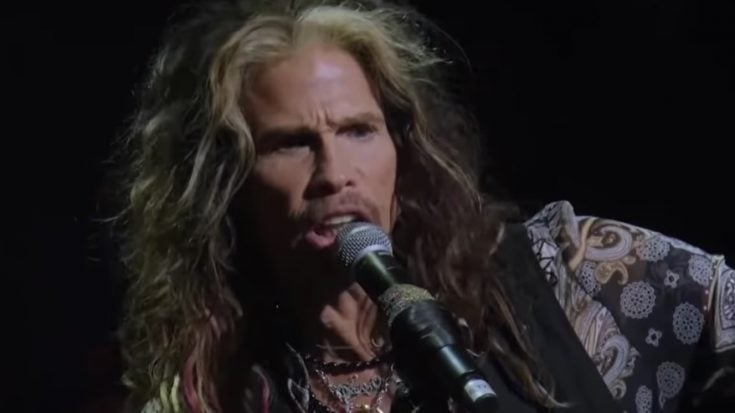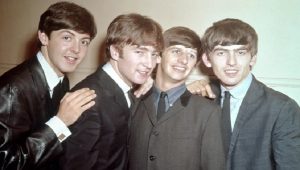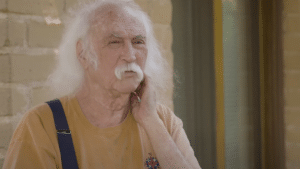The Story Behind The Iconic Phrase “Sex,Drugs, & Rock n Roll”

Steven Tyler - Mick Fleetwood And Friends Official / Youtube
How often have you encountered the phrase “sex, drugs, and rock ‘n’ roll” throughout your life? Countless times, right?
Most music fans’ and pop culture enthusiasts’ earliest encounter with it goes back to Ian Dury and the Blockheads’ 1977 song, but was this phrase Ian’s original creation? While he undoubtedly played a significant role in popularizing it, he didn’t coin it.
The phrase’s earliest known usage dates back to a 1969 article in LIFE magazine, which stated, “The counterculture has its sacraments in sex, drugs, and rock”. It then took many forms and became rock music’s choice of lifestyle.
This iconic expression has become synonymous with the counterculture movements of the 1960s and 1970s, symbolizing a hedonistic lifestyle that embraced pleasure, freedom, and a rejection of societal norms.
“The counterculture has its sacraments in sex, drugs and rock”
The exact origin of “sex, drugs, and rock ‘n’ roll” is somewhat elusive, as it evolved from various sources during the turbulent 1960s. However, one of the earliest recorded instances of this phrase can be attributed to Edward Kern.
In October 1969, a Life magazine article written by Kern, titled Can It Happen Here?, outlined the core components of the counterculture movement: sex, drugs, and rock ‘n’ roll, a hedonist’s favorite trio.
In the article, Kern pondered: “Almost certainly not. Despite all the turmoil in America – the chaos on the campuses, the uprisings in the ghettos, the threats to burn the country down – it is almost impossible to imagine the US undergoing a violent political revolution”.
He then, like a prophet, declared: “The counterculture has its sacraments in sex, drugs and rock”, rather than revolt.
It did not catch on, unfortunately, even when British magazine The Spectator wrote in 1971, “Not for nothing is the youth culture characterized by sex, drugs and rock ‘n’ roll”.
What’s rarely said about the counterculture movement of the 1960s was that it was profoundly anti-establishment. Today the closest beliefs are labelled neoliberalism. It’s strange the bedfellows beliefs keep. And who invented neoliberalism? The same boomers. /4 pic.twitter.com/WrIXCRK1RZ
— Henry Madison (@RageSheen) June 25, 2023
“Sex and drugs and rock and roll is very good indeed”
During the 70s, music was the driving force of the cultural zeitgeist, and it would be music that would bring the phrase to life, thanks to the iconic Ian Dury. The poetic frontman of The Blockheads became the originator of the phrase, that is, if you ask the Oxford English Dictionary.
Dury was gifted with wordplay prowess, and he helped etch the phrase into the annals of history. Thus, his collaboration with The Blockheads, “Sex & Drugs & Rock & Roll”, crystallized the tenets of counterculture in a melody that would endure.
Ironically, though, the beginning of counterculture was not primarily about sex, drugs, and rock ‘n’ roll but rather about living life differently than the war-ravaged era they had grown up in.
It just so happened that as their revolution gained momentum, it coincided with the rise of pop culture, the pill, and a surge in psychedelia, which was consequently molded by Dury into a hedonistic mantra 15 years later.
Released today 30th September 1977 the debut studio album from Ian Dury,
The album peaked at No 5 in the UK album chartsAlbum cover artwork photography by 📸 Chris Gabrin@NewWaveAndPunk #iandury #photooftheday pic.twitter.com/wj9pvZVUe6
— Wayne (@nottco) September 30, 2023
The Counterculture and Rock ‘n’ Roll
The 1960s and 1970s marked a profound period of cultural transformation. Society was in the midst of a seismic shift driven by various factors, including political activism, a widespread rejection of traditional establishment norms, and an insatiable thirst for personal freedom.
It was an era characterized by a generation that yearned to break free from the constraints of the past and forge a new path forward.
In this landscape of change and upheaval, the counterculture movements emerged as powerful forces. These movements were not bound by the conventions of their predecessors; instead, they championed values such as social justice, civil rights, and environmental consciousness.
“Grateful Dead and Janis Joplin were two of the most prominent figures in the 1960s counterculture.” -SOCIETY OF ROCK
Remembering lead guitarist of the Grateful Dead, Jerry Garcia, on his birthday today.
Photo courtesy of Getty Images.#JanisJoplin #QueenOfRockNRoll… pic.twitter.com/sxQjkDszLB
— Janis Joplin (@JanisJoplin) August 1, 2023
At the heart of this cultural revolution was a unifying element: rock ‘n’ roll music. Rock ‘n’ roll became the anthem of the counterculture, a rallying cry for those who sought to challenge the status quo and create a more egalitarian and inclusive society.
Rock ‘n’ roll was more than just music during this era; it was a catalyst for rebellion. Its infectious rhythms and electrifying performances provided an outlet for the frustrations and aspirations of a generation. Musicians like Jimi Hendrix, Janis Joplin, and The Grateful Dead embodied the spirit of this movement through their music and performances. They used their platform to address pressing social issues, advocate for change, and inspire a sense of unity among their fans.
This artistic freedom led to the creation of timeless songs that continue to resonate with audiences today. In essence, rock ‘n’ roll became the canvas upon which the counterculture painted its hopes, dreams, and demands for a better world.












